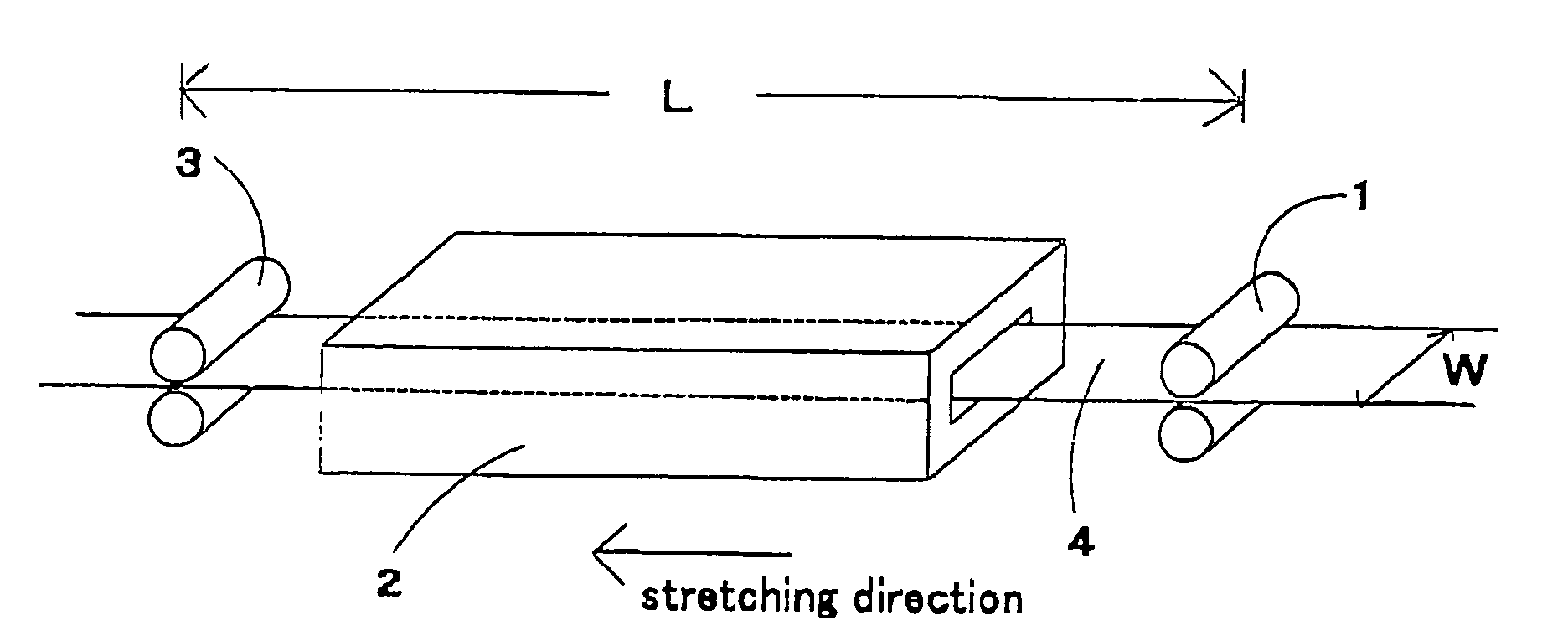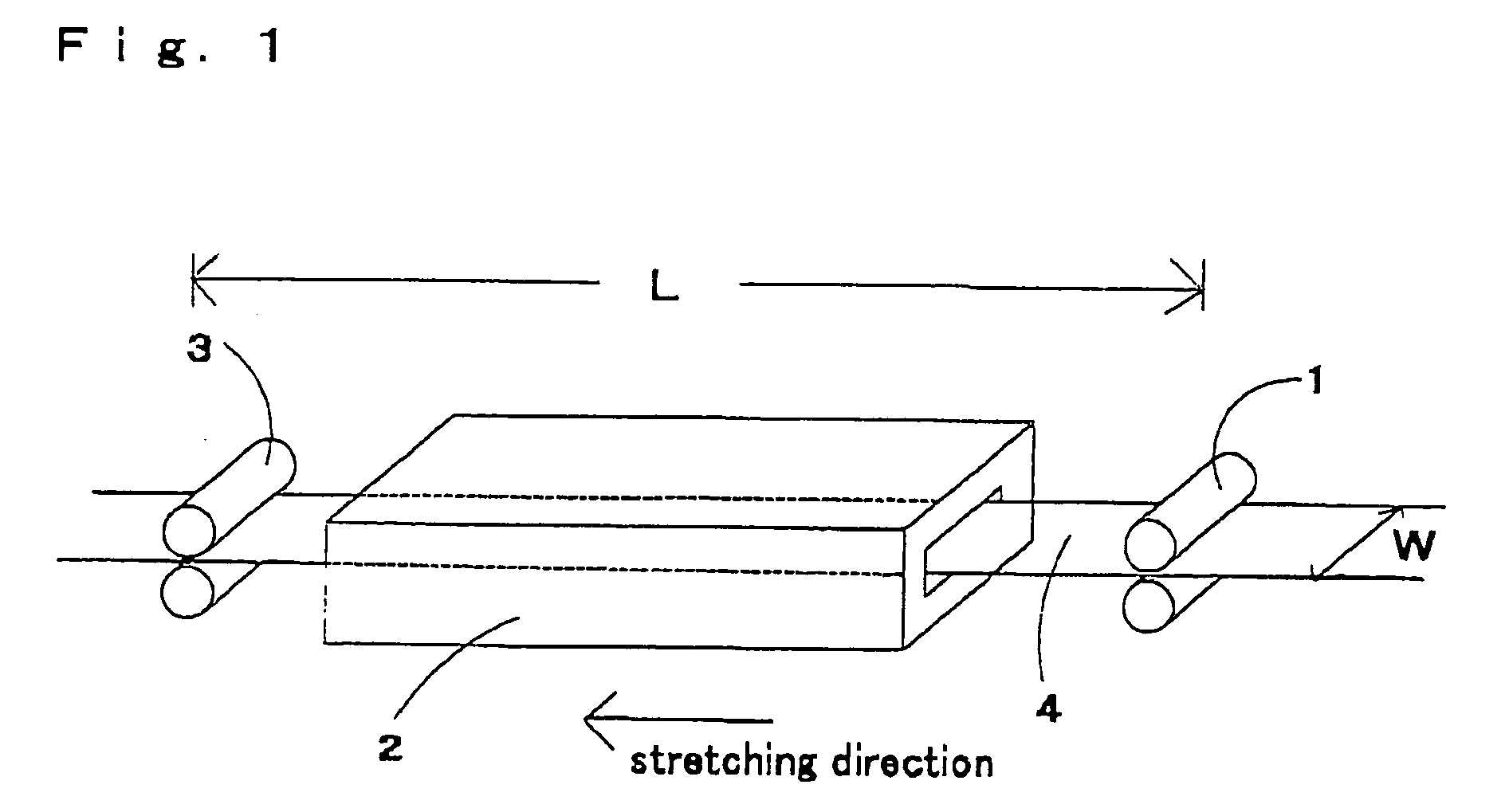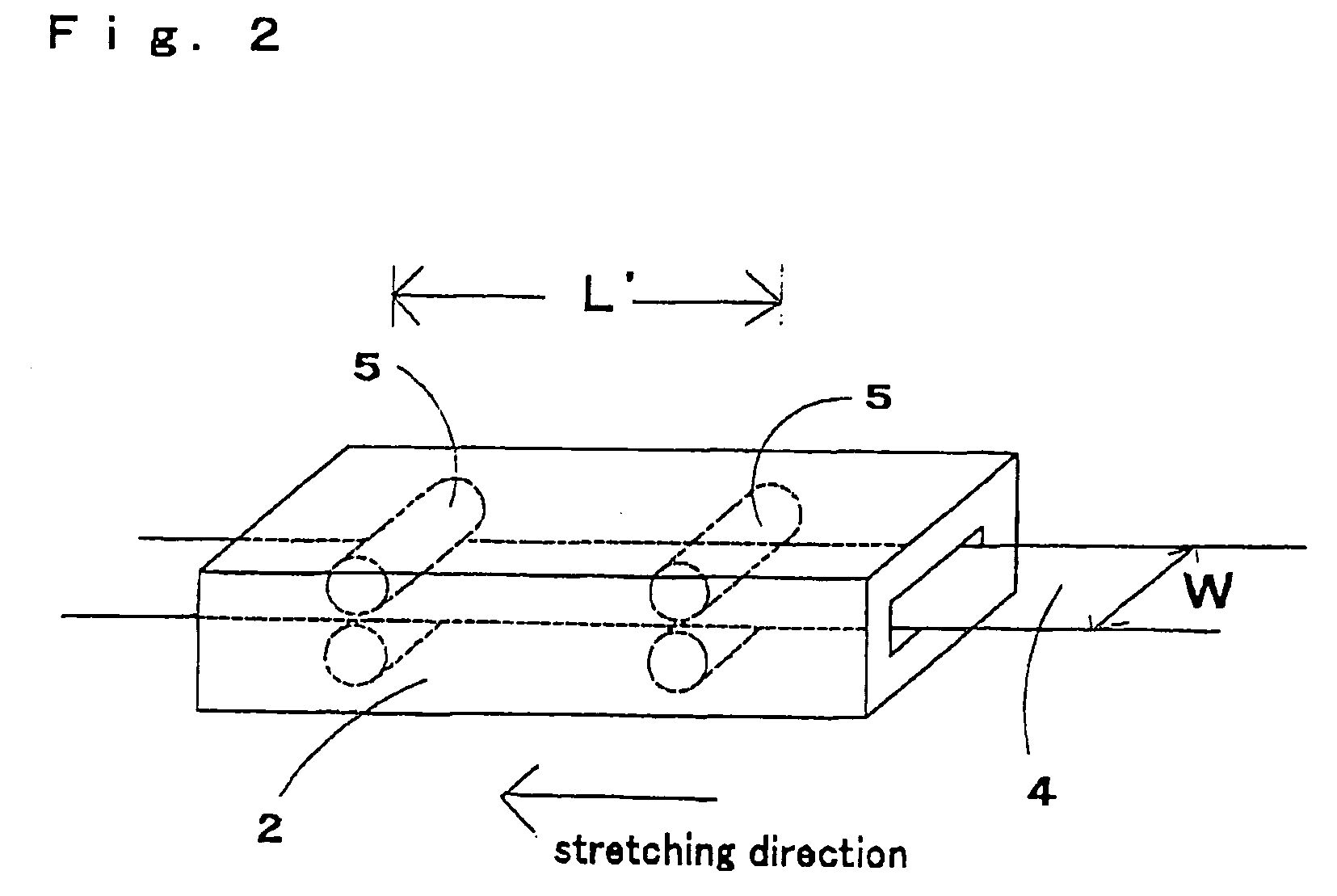Cellulose acylate film and method for producing the same
a technology of cellulose acylate and cellulose acylate, which is applied in the field of cellulose acylate film, can solve the problems of fine planar unevenness and frame-like failure, and achieve the effect of improving fine display unevenness
- Summary
- Abstract
- Description
- Claims
- Application Information
AI Technical Summary
Benefits of technology
Problems solved by technology
Method used
Image
Examples
examples
[0220] Hereafter, the present invention will be further specifically explained by referring to examples. However, the materials, amounts used, ratios, types of processes procedures of processes and so forth mentioned in the examples may be optionally changed without departing from the spirit of the present invention. Therefore, the scope of the present invention is not limited to the specific examples described below.
examples 1 and 2
1. Cellulose Acylate Resin
[0221] Cellulose acylate resins having different acyl groups in different substitution degrees mentioned in Table 1 were prepared. In the preparation, sulfuric acid as a catalyst was added (7.8 parts by weight to 100 parts by weight of cellulose), and a carboxylic acid as a raw material of the acyl substituents was added to perform an acylation reaction at 40° C. In this acylation reaction, the type and / or substitution degree of the acyl group were controlled by changing the type and / or amount of the carboxylic acid. After the acylation, ripening was performed at 40° C. Polymerization degrees of the cellulose acylates obtained as described above were obtained by the following method and mentioned in Tables 1 and 2.
(Measurement Method for Polymerization Degree)
[0222] About 0.2 g of an absolutely dried cellulose acylate resin was precisely weighed and dissolved in 100 mL of a mixed solvent of methylene chloride and ethanol (9 / 1, weight ratio). Drop secon...
example 1
(1) Melt Film Formation [Example 1]
[0227] Each of the aforementioned cellulose acylate resins was molded into cylindrical pellets having a diameter of 3 mm and a length of 5 mm. Silicon dioxide microparticles (0.05% by weight) (Aerosil R972V) was added for all the levels. During this molding of pellets, a plasticizer selected from the followings (indicated in Table 1) was kneaded in the pellets. The pellets were dried in a vacuum drier at 110° C. so as to have a moisture content of 0.1% or less and then put into a hopper of which temperature was adjusted to (Tg−10)° C.
[0228] TPP: Triphenyl phosphate
[0229] BDP: Biphenyldiphenyl phosphate
[0230] DOA: Bis(2-ethylhexyl) adipate
[0231] PTP: 1,4-Phenylene-tetraphenyl phosphate
[0232] The melting temperature was adjusted so that the melt viscosity should become 5000 Pa·s, and the resin was melted at this temperature in a single screw kneader over 5 minutes, then cast from a T die set at a temperature 10° C. higher than the melting temper...
PUM
| Property | Measurement | Unit |
|---|---|---|
| thickness | aaaaa | aaaaa |
| thickness | aaaaa | aaaaa |
| weight % | aaaaa | aaaaa |
Abstract
Description
Claims
Application Information
 Login to View More
Login to View More - R&D
- Intellectual Property
- Life Sciences
- Materials
- Tech Scout
- Unparalleled Data Quality
- Higher Quality Content
- 60% Fewer Hallucinations
Browse by: Latest US Patents, China's latest patents, Technical Efficacy Thesaurus, Application Domain, Technology Topic, Popular Technical Reports.
© 2025 PatSnap. All rights reserved.Legal|Privacy policy|Modern Slavery Act Transparency Statement|Sitemap|About US| Contact US: help@patsnap.com



